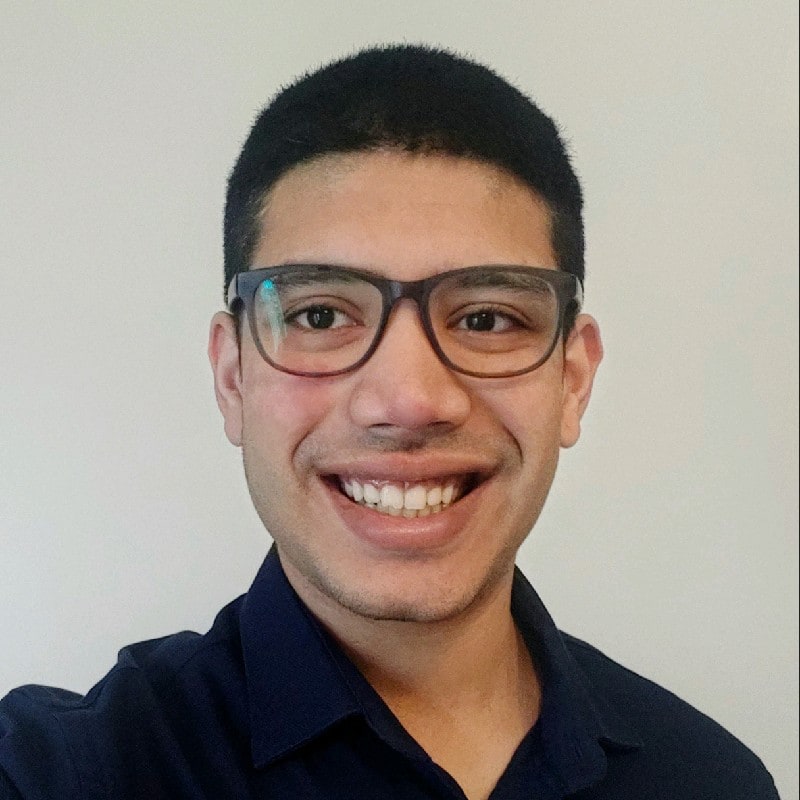
For innovative students whose technology courses often require the design and production of individual machined parts for class projects, the Bechtel Innovation Design Center is a treasure trove of manufacturing equipment. Inside the three-level building, students from any Purdue major can use 3D printers, waterjets, laser cutters, engravers, and computer-controlled (CNC) mills and lathes for metal and wood, along with the equipment’s corresponding CAD (computer-aided design) and CAM (computer-aided manufacturing) software.
The downside to having access to all that specialized equipment, however, is the necessity for students to first become proficient with the machines in order to operate them correctly. Depending on the device, it could be a lot to learn, with little time in which to learn it.
 “Students needed to know how the machine worked, how they would be set up, what the tool body was and how it was going to work, and all the engineering parameters for the kind of cut they wanted to make,” said Matthew Swabey, director of the Bechtel Innovation Design Center. “Students even had to know what kind of vises we had and what kind of tools were in the drawers.”
“Students needed to know how the machine worked, how they would be set up, what the tool body was and how it was going to work, and all the engineering parameters for the kind of cut they wanted to make,” said Matthew Swabey, director of the Bechtel Innovation Design Center. “Students even had to know what kind of vises we had and what kind of tools were in the drawers.”
Swabey explained that knowing the types of machines available at Bechtel and being familiar with how they work is fundamental to students’ projects because, after all, “it’s quite difficult to come up with a plan for making your part if you don’t know what’s available.”
However, becoming an expert in a machine’s use in order to create only one piece for a class project seemed a bit excessive. Furthermore, Bechtel staff members, who are far more experienced in the machines’ use, were spending a great deal of time correcting students’ designs and equipment set-ups, which Swabey felt was frustrating for everyone.
“From the student’s perspective, it was very disempowering for them,” Swabey said. “They would come up with a design and invest hours on a manufacturing plan for it and, as soon as they met our staff, everything (about their project) would need to be changed or altered or deleted, and they would need to do it all over again. It’s very harmful to your education if you don’t own what you’re trying to do, and we, the so-called ‘experts,’ are just coming in and changing everything.”
Swabey lamented the amount of time that students needed to invest in learning how to use the equipment. He said that as much as he wants to teach students, he doesn’t want them to get mired in the minutia of an individual machine’s unique working mechanisms or proprietary differences that won’t serve the students well after they graduate.
“The student needs to build a part for a project,” Swabey said. “Maybe they’re working for a research professor or trying to build a car. They don’t have the time to stay up to date with equipment that they’re going to use once. They’re not full-time machinists.
“But we do want to teach them how machining is done,” Swabey explained. “It’s somewhat of a stereotype in the industry that design engineers don’t know how things are made, so they’re always giving impossible ideas and designs to the manufacturing plant. We don’t want students to think they can make a drawing and throw it over a wall and then, magically, get their piece back. That’s no kind of education at all.”
Bechtel’s student employees key to solving challenge
 When it came to students knowing how things are made versus how to operate the machining equipment, Swabey needed a happy medium, so he enlisted Bechtel’s student employees to devise a solution.
When it came to students knowing how things are made versus how to operate the machining equipment, Swabey needed a happy medium, so he enlisted Bechtel’s student employees to devise a solution.
“Our student employees were key to solving this challenge,” said Swabey.
Led by Anirudh Pal, Bechtel’s technical operations manager, the trouble-shooting team brainstormed the idea of a cloud-based digital library containing all of Bechtel’s equipment, including tools, cutting devices, support stands, tables and other attachments, and their corresponding digital assets, such as user instructions. Within that overarching library of equipment are more than a dozen more libraries, with up to 150 tools each, and hundreds of individual sub-libraries of processes that are specific to each tool and piece of equipment. Essentially, there are thousands of menus that students can access via their computers. And the number updates constantly.
“We have multiple libraries and, within this library, we have about 150 tools. Each tool is digitally modeled,” Pal said. “Students see the holder, which is the back of the tool, and they see the insert, which goes at the front of the tool. And they see all the product IDs and different configurations available, depending on what material they’re working on, such as plastic or aluminum.”
Creating Bechtel’s tool libraries was a massive, time-consuming undertaking, requiring more than 18 months of work. One lathe library took Pal 36 hours to create.
“Developing the parameters that are stored in that library is not included in that 36-hour time window,” clarified Swabey. “That was just the physical modeling and the organizing and just getting all the elements collected and recorded. And each tool might have several different settings, depending on the material it’s being used on, so that multiples it yet again,” he said.
“Through the cloud, we share every possible configuration you can have,” said Pal. “We have digital resources, like our work holdings, where you see all the tables we have and the different configurations they support. You can drag and drop things together to form a custom configuration rather quickly, without having to physically show up to see what tools we have,” Pal continued. “And that extends to our tool libraries as well, where we have an extensive list of tools. One of my favorites is the Haas ST-20, a CNC lathe.”
All of the configuration options might sound overwhelming, but cataloging the equipment and their respective assets makes working with the devices easier.
“Students just need to know the start and stop buttons and the tool advance button because all of the work is done in the same environment they’ve modeled their part in, the same environment they’ve designed their manufacturing strategy,” Swabey said. “They don’t need to learn the thousands of menus and thousands of combinations that the CNC presents. Now, we’ve got a real focus on, what I call, reusable education.”
Crowdsourcing via the cloud
An added benefit of the library’s creation in the cloud is the ability for students to upload their own knowledge for the greater good.
“When a student discovers a new setting, perhaps one that produces a nice mirrored finish on aluminum, we can capture those engineering parameters and distribute them automatically to hundreds and hundreds of students instantly,” Swabey said. “They’re benefitting from all of their composite knowledge.”
“It’s a work in progress that’s constantly updating,” Pal added.
One year later
Bechtel’s digital library has been in effect for about a year. How have things improved?
“In that year, we’ve gone from students breaking tools to not breaking tools,” said Pal. “And students have gone from needing to learn every button on a machine to, basically, showing up in front of the machine and having the machine do the rest. We also support a vastly broader selection of digital assets. Before, the only way you knew what we had was to come to our lab and look at it. Now you can just pull it up on your computer and see what tools we have. Everything that’s physically present here has a digital representation on the computer.”
More than 800 Purdue students have taken advantage of Bechtel this semester. Pal said there is room for more, including students who aren’t familiar with manufacturing.
“What we offer is a learning environment that is heavily focused on the software skill of the student,” Pal said. “So, if someone is comfortable looking at a piece of software and doing the work in it, they’ll be successful in our lab, even if they’ve never operated industrial equipment. That’s what we’re able to offer with our system. You don’t need to know how to use our equipment, as long as you can use the standardized software.
“I’m really proud of this,” Pal continued. “This has been my life’s work for the last three years. And, obviously, none of this would be possible without the entire Bechtel team.”
Visit Instagram to see some of the projects being created at the Bechtel Innovation Design Center.
